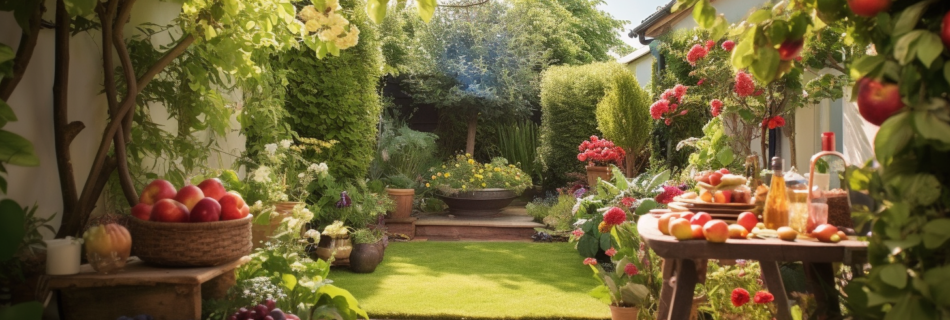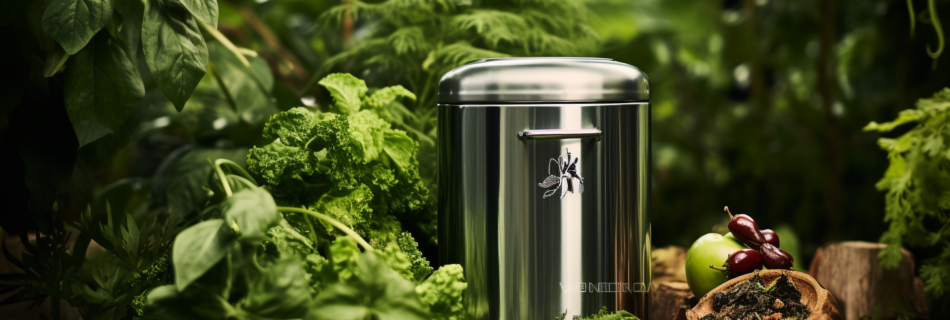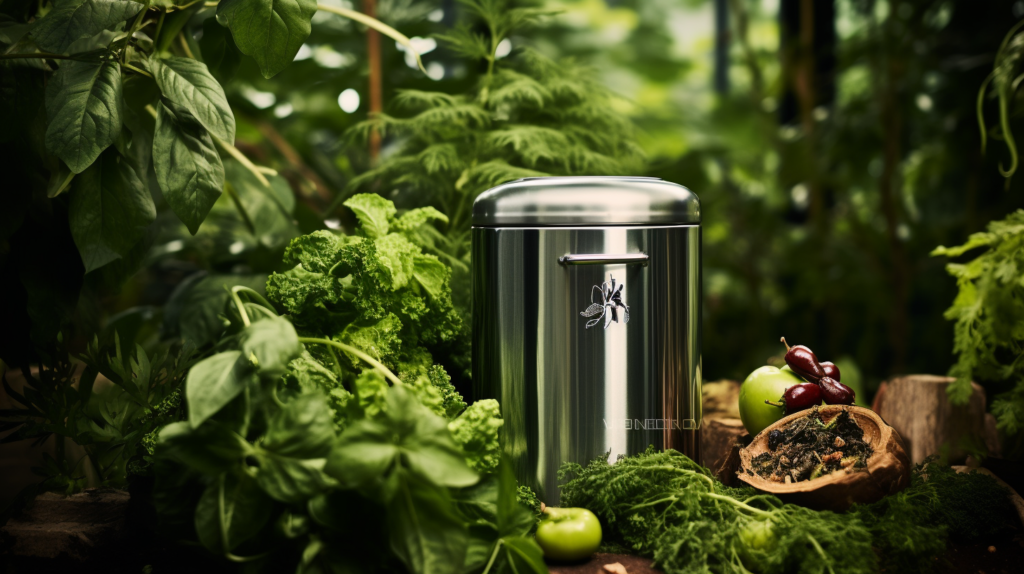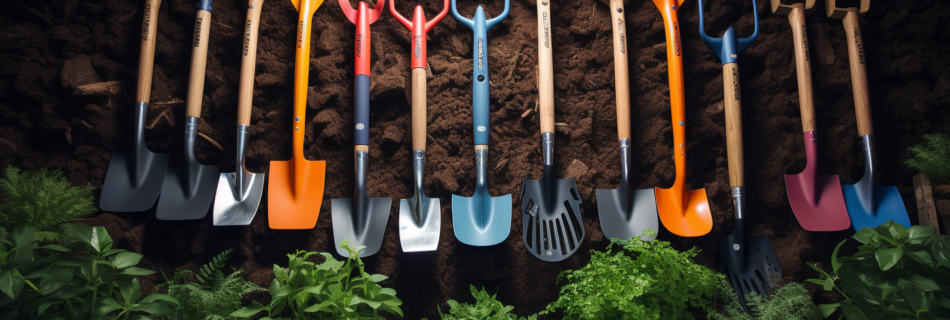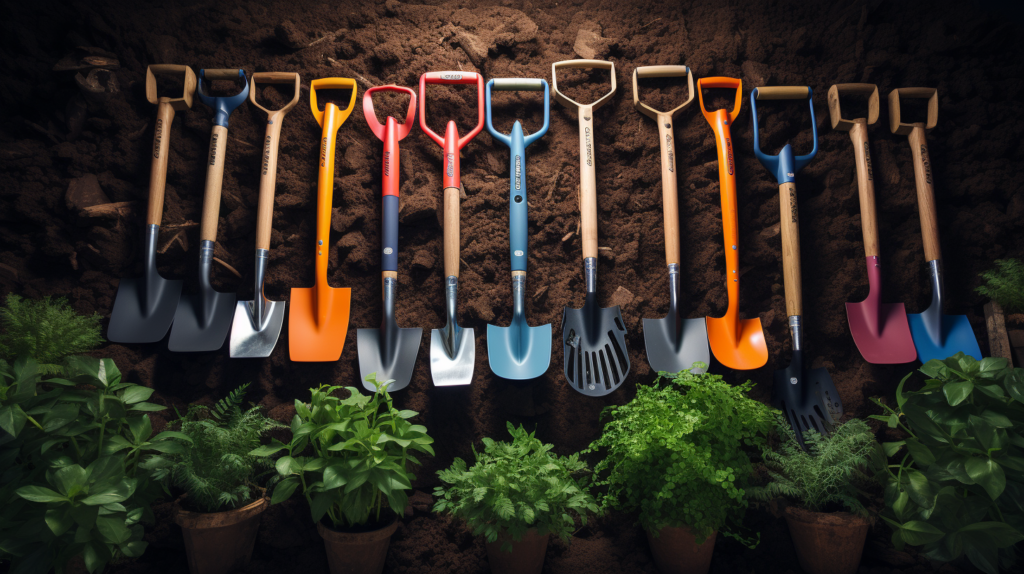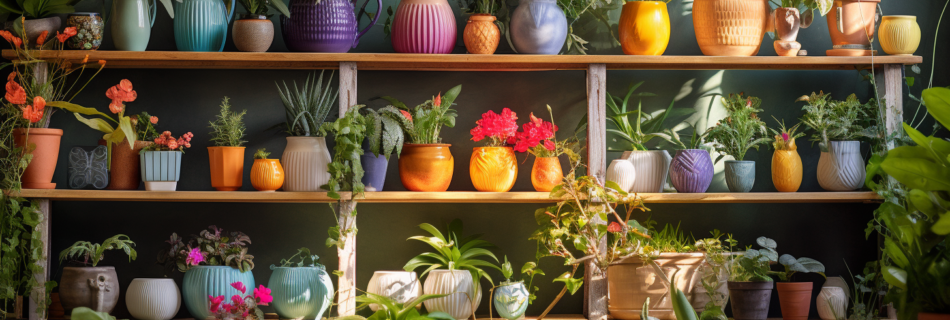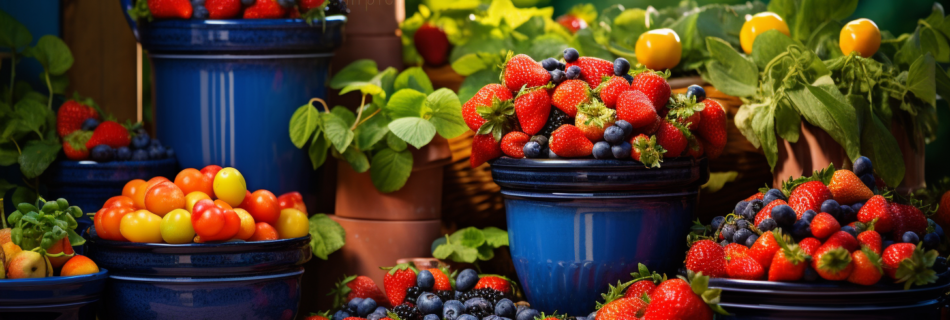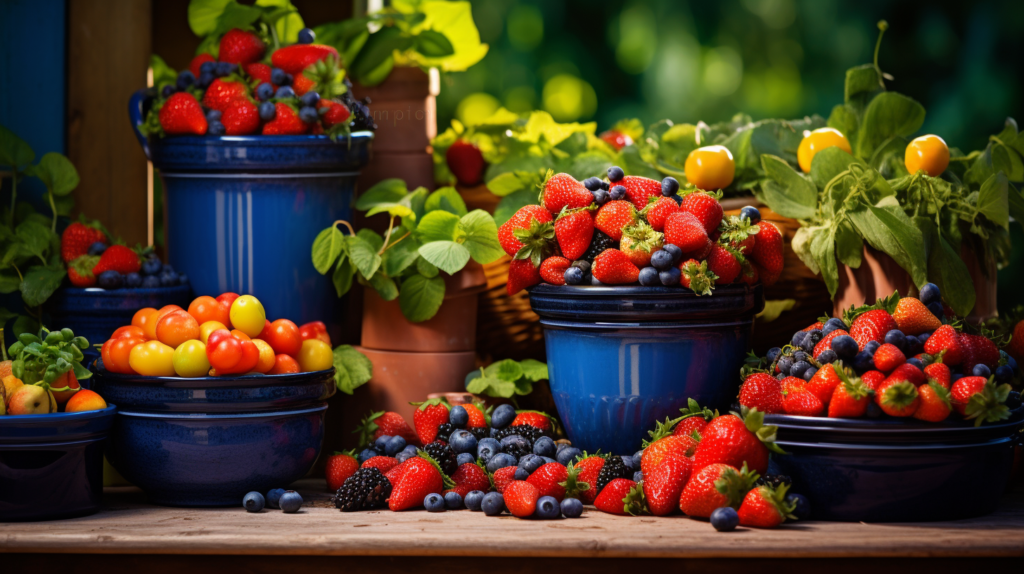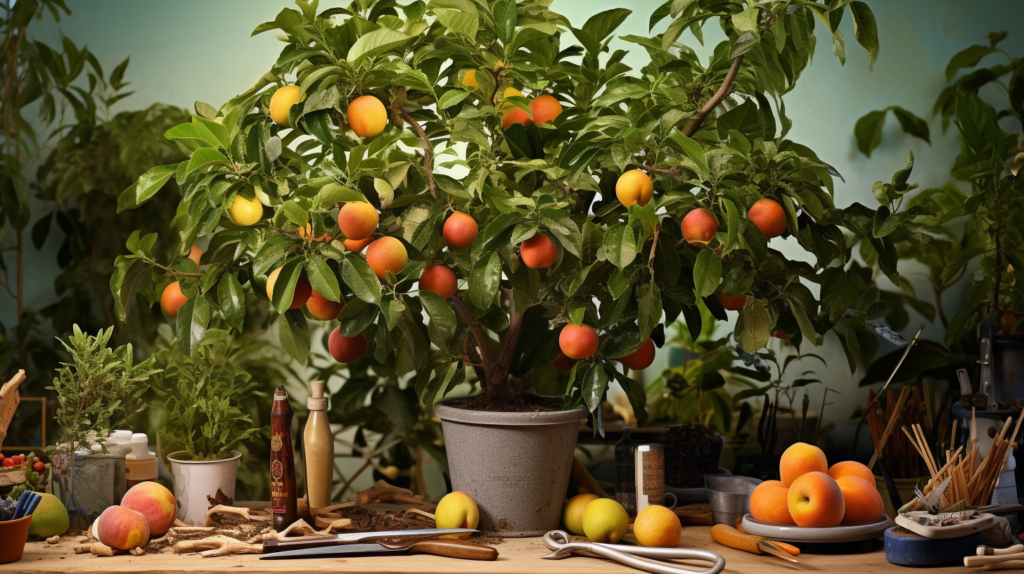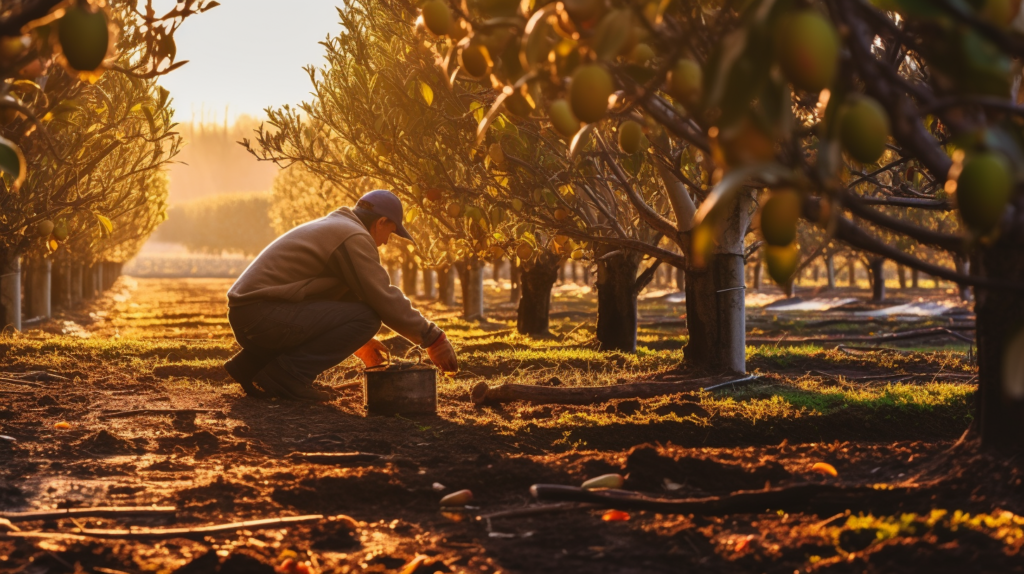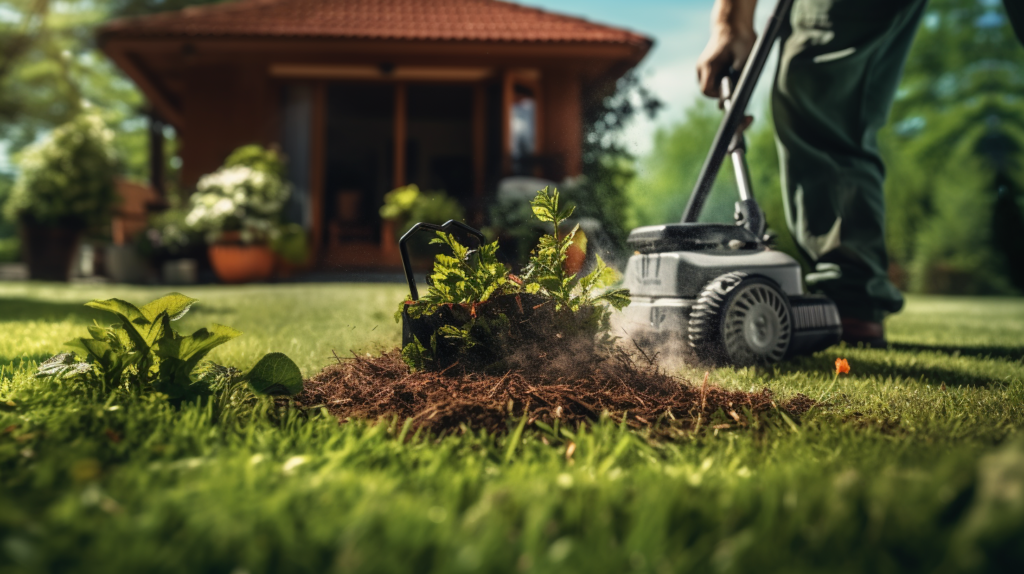Looking to grow your own fruit trees in the UK? Worried about the time and effort it might require? Look no further!
We’ve got you covered with our expert advice on the top 11 easiest and low maintenance fruit trees specifically suited for the UK climate.
From classic favorites like apple and pear trees to unique options like quince and medlar trees, we’ll guide you through everything you need to know to enjoy the pride and satisfaction of harvesting your own delicious homegrown fruit.
Let’s get started!
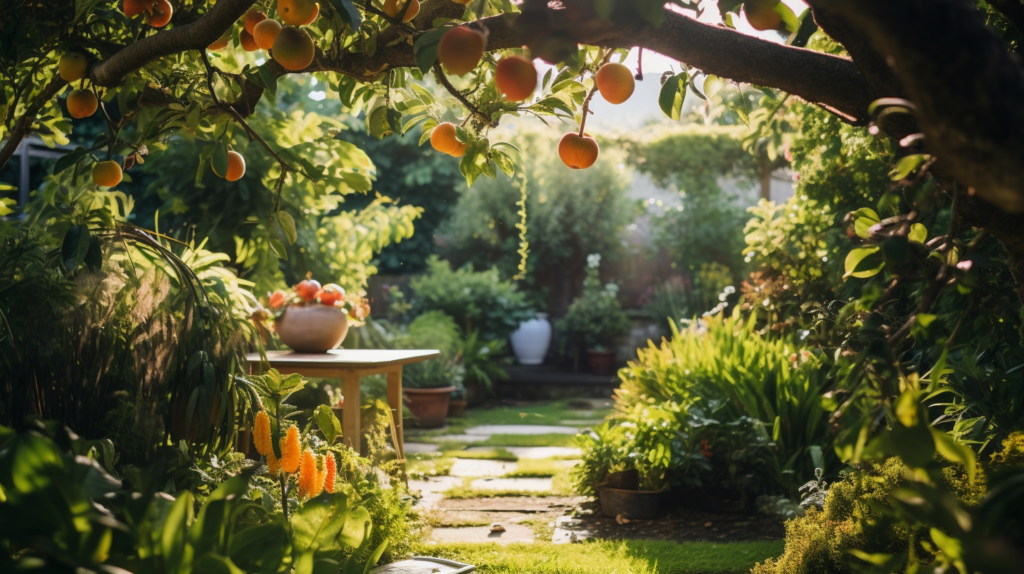
Top 11 Easiest and Low Maintenance Fruit Trees UK
When choosing fruit trees for your garden in the UK, there are several factors to consider. First, think about the specific environmental conditions required by different types of fruit trees. For example, lemon trees thrive in warm and sunny environments. Apple trees, on the other hand, need good soil drainage and ample sunlight to grow and produce fruit successfully.
Next, consider the maintenance requirements of the fruit trees you are considering. Pear trees, for instance, require regular pruning and watering to ensure healthy growth. Plum trees, on the other hand, are known for their optimal growth and fruitful production.
Lastly, think about the potential challenges that may arise when growing fruit trees. Cherry trees, for instance, are known to be susceptible to pests and diseases. However, they are also known for their ability to self-pollinate, which can be an advantage in certain situations.
1. Lemon Tree
If you want a low maintenance fruit tree in the UK, consider planting a lemon tree. Despite not being native to the UK, lemon trees can thrive under the right conditions. Here’s why they’re a great choice:
- Lemon trees prefer a warm and sunny environment, so they need to be placed in a bright location with plenty of sunlight.
- They require well-draining soil to avoid waterlogging, making them suitable for growing in pots or containers.
- Lemon trees need regular watering, especially during the growing season, but they don’t like to be overwatered.
With a little care and attention, lemon trees can be low maintenance and provide you with delicious and tangy fruits. So why not add a touch of Mediterranean charm to your garden with a lemon tree?
2. Apple Trees
To grow low maintenance apple trees in the UK, there are several key factors to consider. First, it is important to choose a location with good soil drainage, ample sunlight, and protection from strong winds. These conditions will help ensure the health and growth of the trees.
Regular pruning during the dormant season is beneficial for apple trees. This practice promotes healthy growth and fruit production. By removing dead or diseased branches, the tree’s overall health can be improved.
Watering is crucial, especially in the first few years after planting. Regular watering during dry periods will result in a better crop. This is particularly important for young trees as they establish their root systems.
Fertilizer may be necessary to provide the necessary nutrients for growth and fruit production. It is important to choose the right type and apply it according to the manufacturer’s instructions.
It is also important to be vigilant for pests and diseases that can affect apple trees. Common problems include apple scab, powdery mildew, and codling moth. Taking appropriate measures to prevent or treat these issues will help maintain the health of the trees and ensure a good harvest.
With proper care and attention, apple trees can be relatively low maintenance fruit trees in the UK. By considering factors such as location, pruning, watering, fertilizing, and pest control, you can enjoy the benefits of homegrown apples with minimal effort.
3. Pear Trees
Maintain your pear trees in the UK by regularly pruning, fertilizing, watering, and protecting them from pests and diseases.
Pruning the tree helps remove dead or damaged branches and encourages new growth.
Fertilizing with a balanced fertilizer in the spring provides the tree with essential nutrients for optimal growth and fruit production.
Watering regularly, especially during dry spells, prevents dehydration and ensures the tree stays healthy.
Protecting the tree from pests and diseases involves keeping the area clean and removing fallen fruit or leaves that may attract them.
Harvest the fruit when it’s ripe and store it in a cool, dry place to extend its shelf life.
4. Plum Tree
Continuing from the previous subtopic on pear trees, let’s now delve into the topic of plum trees, which are among the top 11 easiest and low maintenance fruit trees in the UK.
Plum trees can be relatively low maintenance, but they still require some care to grow and produce fruit optimally. Prune the tree regularly to remove dead, diseased, or damaged branches and encourage new shoots.
Fertilize the tree in the spring with a balanced fertilizer to provide the necessary nutrients for growth and fruit production. Water the tree regularly, especially during dry spells, to prevent dehydration.
Keep the area around the tree clean to protect it from pests and diseases. Harvest the ripe fruit and store it in a cool, dry place for longer shelf life.
5. Cherry Tree
How can you ensure that your cherry tree remains one of the top 11 easiest and low maintenance fruit trees in the UK? Here are some tips to keep your cherry tree healthy and productive:
- Prune the tree regularly to remove dead, diseased, or damaged branches, and to encourage new growth.
- Fertilize the tree in the spring with a balanced fertilizer to provide the necessary nutrients for growth and fruit production.
- Water the tree regularly, especially during dry spells, to prevent dehydration.
By following these simple steps, you can enjoy a bountiful harvest of sweet or sour cherries from your low maintenance cherry tree.
Just imagine the satisfaction of plucking ripe cherries straight from your own garden, and the joy of sharing them with your loved ones. Cherries aren’t only delicious, but they also add a splash of vibrant color to your outdoor space.
6. Fig Tree
To ensure that your fig tree remains one of the top 11 easiest and low maintenance fruit trees in the UK, all you need to do is provide it with regular pruning, fertilization, and watering.
Prune the tree regularly to remove dead or damaged branches and encourage new growth.
Fertilize the tree in the spring with a balanced fertilizer to give it the nutrients it needs.
Water the tree regularly, especially during dry spells, to prevent dehydration.
Keep the area around the tree clean to protect it from pests and diseases.
Harvest the figs when they’re ripe and enjoy them fresh or use them in various recipes.
Remember that fig trees can be sensitive to cold temperatures, so choose a location that offers some protection or consider growing them in containers that can be brought indoors during winter.
With a little bit of care, you can enjoy the unique and delicious taste of fresh figs from your own garden.
7. Apricot Trees
To maintain the status of apricot trees as one of the top 11 easiest and low maintenance fruit trees in the UK, you simply need to provide them with regular pruning, fertilization, and watering.
Here are some expert tips for keeping your apricot trees thriving:
- Prune the tree regularly to remove dead, diseased, or damaged branches, and to encourage new growth.
- Fertilize the tree in the spring with a balanced fertilizer to give it the nutrients it needs.
- Water the tree regularly, especially during dry spells, to prevent dehydration.
By following these simple steps, you can ensure that your apricot tree stays healthy and produces an abundance of sweet and juicy fruit.
8. Peach Tree
If you’re looking for an easy and low maintenance fruit tree in the UK, consider planting a peach tree. Peaches are hardy and can produce an abundance of sweet and juicy fruit with minimal care.
To maintain a peach tree, regularly prune it to remove dead or damaged branches and encourage new growth. Fertilize the tree in the spring with a balanced fertilizer to provide the necessary nutrients for growth and fruit production.
Water the tree regularly, especially during dry spells, to prevent dehydration. Keep the area around the tree clean to protect it from pests and diseases. Harvest the ripe fruit and store it in a cool, dry place for longer shelf life.
Remember to spray the tree with fungicide in early spring to prevent peach leaf curl, a common fungal disease. With a little care, you can enjoy the delicious taste of fresh peaches from your garden.
9. Mulberry Tree
When caring for a mulberry tree in the UK, it’s important to regularly prune dead or damaged branches and encourage new growth. This helps to maintain the health and shape of the tree.
Fertilizing the tree in the spring with a balanced fertilizer provides it with the necessary nutrients for optimal growth and fruit production.
Watering the tree regularly, especially during dry spells, prevents dehydration and ensures the tree remains healthy.
It’s also crucial to protect the tree from pests such as caterpillars and birds, which can damage the fruit.
Finally, harvesting the fruit when it’s fully ripe and storing it properly will help to preserve its delicious taste.
10. Blueberry Tree
Growing a blueberry tree in the UK is a low maintenance and rewarding experience.
To ensure success, plant blueberry bushes in well-drained soil with a pH of 4.5 to 5.5. If your soil isn’t acidic enough, amend it with sulphur or use a container filled with acidic potting soil.
Mulch around the base of the plant with organic matter to retain moisture and suppress weeds. Water regularly during dry spells, but be careful not to overwater to prevent root rot.
Fertilize once a year in spring with an acidic fertilizer. Prune in late winter or early spring to remove dead or crossing branches and promote new growth.
Protect the bushes from birds with netting or a scarecrow. With minimal care, you can enjoy the sweet and nutritious taste of fresh blueberries straight from your garden in the UK.
11. Nectarine Tree
To continue the discussion from the previous subtopic, let’s delve into the low maintenance and rewarding experience of growing a Nectarine Tree in the UK.
Here are some tips for maintaining nectarine trees:
- Prune the tree regularly to remove dead, diseased, or damaged branches, and to encourage new growth.
- Fertilize the tree in the spring with a balanced fertilizer to provide it with the necessary nutrients.
- Water the tree regularly, especially during dry spells, to prevent dehydration.
Growing a nectarine tree can be a great option for those in the UK who want to enjoy the delicious taste of fresh nectarines straight from their garden. With minimal care, you can have sweet and juicy fruit right at your doorstep.
Remember to protect the tree from pests and diseases and harvest the fruit when ripe. Just be mindful of peach leaf curl and spray the tree with fungicide in early spring to prevent it.
Enjoy the low maintenance and bountiful rewards of growing a nectarine tree in the UK!
Best Fruit Trees for Small Gardens Uk
For small gardens in the UK, the best fruit trees are those that can be grown in pots or containers and don’t take up too much space. Dwarf varieties of apples, pears, plums, cherries, and peaches are suitable options. You can also consider figs, quinces, apricots, and nectarines, which can be grown in containers.
Dwarf fruit trees typically grow to around 3-4 meters tall and 2-3 meters wide, making them space-efficient while still producing a good crop of fruit.
Growing fruit trees in pots or containers is a viable option for small gardens, as it allows for flexibility and mobility. When choosing a pot or container, make sure it’s at least 50cm deep and has proper drainage holes. Use a high-quality potting mix with plenty of organic matter.
Plant your tree following the instructions on the packaging, water it well, and place it in a sunny spot, preferably south-facing. Regular watering during dry periods and some care and attention will ensure your dwarf fruit tree bears fruit in no time.
Best Fruit Trees for Northern England
If you’re looking for the best fruit trees for Northern England, consider planting apple trees such as Coxs Orange Pippin, Egremont Russet, or Northern Spy. These apple varieties are well-suited to the climate and soil conditions in this region, ensuring a successful harvest.
Cherries are another great option for Northern England, with sweet varieties like Stella and Sunburst being less susceptible to frost. Sour cherries can also thrive in this region with proper cold protection.
Pear trees, although requiring a bit more care, can produce delicious fruits in Northern England. Consider planting Williams Bon Chretien or Conference varieties for a successful pear harvest.
Plum trees, particularly the Victoria variety, are also well-suited to this region. While pear and plum trees may require a little more attention, the results will be well worth the effort.
Small Fruit Trees for Garden in UK
Looking to add small fruit trees to your garden in the UK? If you have limited space but still want to enjoy the fruits of your labor, there are several options available. Here are four small fruit trees that are suitable for gardens in the UK.
- Dwarf Apple Tree: These apple trees only grow to be about 6-8 feet tall, making them perfect for smaller yards or gardens. Despite their size, they still produce full-size apples, allowing you to enjoy a bountiful harvest.
- Meyer Lemon Tree: Meyer lemons are known for their sweet and fragrant flavor. A Meyer lemon tree will only grow to be about 8-10 feet tall, making it a great choice for smaller garden spaces.
- Cherry Tree: Whether you prefer sweet or sour cherries, a cherry tree can be a delightful addition to your garden. These trees typically only grow to be 10-12 feet tall, so they won’t take up too much room.
- Peach Tree: Peaches are a summertime favorite, and fortunately, peach trees don’t require a large amount of space to thrive. These trees can fit well in smaller gardens and provide you with delicious, juicy peaches to enjoy.
Unusual Fruit Trees UK
Looking to add some uniqueness to your garden? Consider planting an unusual fruit tree in the UK. Here are three unusual fruit trees that can add a touch of novelty to your garden:
- Quince Tree: The quince tree produces a yellowish-green fruit that’s a cross between an apple and a pear. It has a distinctive aroma and is commonly used in jams and preserves. Planting a quince tree can bring a traditional touch to your garden and provide you with a delicious ingredient for your homemade preserves.
- Medlar Tree: The medlar tree produces plum-like fruits that are often used in jams or pies. Although they’re too tart to eat fresh, they can be transformed into delicious preserves. Planting a medlar tree can give your garden an exotic flair and provide you with unique ingredients for your baking adventures.
- Mulberry Tree: The mulberry tree produces red or black berries that have a taste similar to a combination of raspberries and blackberries. The berries can be eaten fresh or used in various culinary creations, such as pies, jams, or even wine. Planting a mulberry tree can add a touch of sweetness to your garden and provide you with a delightful treat during the harvesting season.
Best Time to Plant Fruit Trees UK
The best time to plant fruit trees in the UK is between late October and early November. This allows the roots to establish themselves before winter arrives. While spring planting can also be successful, it’s important to ensure that the soil isn’t too wet.
When choosing a location for your fruit tree, make sure it receives full sun and has good drainage. Avoid low-lying areas that are prone to frost and try to find a sheltered spot to protect the tree from strong winds.
To plant the tree, dig a hole twice as wide as the root ball and backfill it with soil mixed with compost or well-rotted manure. Water the tree thoroughly after planting. If necessary, stake the young tree with a 1m tall stake to provide support as it grows and produces fruit. You can remove the stake after 3-5 years once the tree has reached maturity.
Which is the Easiest Fruit Tree to Grow in the UK
The easiest fruit tree to grow in the UK is the apple tree. With its hardy nature and ability to tolerate a range of conditions, apple trees can thrive in most parts of the country. They require minimal maintenance, needing only annual pruning and feeding to produce a bountiful crop of delicious apples each year.
If you’re new to growing fruit trees or have limited space in your garden, a dwarf apple variety is a great choice. These compact trees still yield plenty of tasty apples while taking up less room than standard-sized varieties.
Here are three reasons why growing an apple tree is a rewarding and enjoyable experience:
- Abundance of fruit: Apple trees are known for their generous fruit production, ensuring you’ll have plenty of apples to enjoy or share with friends and family.
- Versatility in use: Apples can be used in a variety of ways, from making pies and crumbles to juicing and preserving. The possibilities are endless!
- Beautiful blossoms: In addition to the tasty fruit, apple trees also offer stunning blossoms in the spring, adding beauty and fragrance to your garden.
What is the Hardiest Fruit Tree in UK?
When it comes to the hardiest fruit tree in the UK, you can’t go wrong with the apple tree. It’s known for its ability to withstand extremely low temperatures, withstanding as low as -30 degrees Fahrenheit.
Other cold-hardy fruit trees include the sour cherry, apricot, and peach, which can tolerate temperatures down to about -20 degrees Fahrenheit. However, the hardiness of a fruit tree also depends on its cultivar or variety. It’s important to research and choose a cultivar that’s known for its hardiness if you’re looking for a truly tough fruit tree.
Keep in mind that there are some varieties of apples that are more cold-hardy than others. So, if you want a fruit tree that can thrive in the UK’s unpredictable weather, consider planting an apple tree or other cold-hardy options like the sour cherry, apricot, or peach.
Frequently Asked Questions
Can Fruit Trees Be Grown in Containers in the UK?
Yes, fruit trees can be grown in containers in the UK. Choose dwarf varieties like apples, pears, plums, cherries, and peaches. Figs, quinces, apricots, and nectarines can also be grown in containers. They are space-efficient and still produce a good crop of fruit.
How Can I Protect My Fruit Trees From Pests and Diseases in the UK?
To protect your fruit trees from pests and diseases in the UK, prune regularly, water adequately, and fertilize as needed. Use fungicides or insecticides when necessary and monitor for signs of infestation or disease.
What Are Some Options for Small Fruit Trees Suitable for Gardens in the UK?
For small gardens in the UK, consider dwarf varieties of apples, pears, plums, cherries, and peaches. Figs, quinces, apricots, and nectarines can be grown in containers. These space-efficient trees still produce a good crop of fruit.
What Are Some Unusual Fruit Trees That Can Be Grown in the UK?
Some unusual fruit trees that can be grown in the UK include quince, medlar, mulberry, and fig trees. These trees offer unique fruits like yellowish-green quinces, plum-like medlars, red or black mulberries, and versatile figs.
When Is the Best Time to Plant Fruit Trees in the UK?
The best time to plant fruit trees in the UK is in late autumn or early winter when the trees are dormant. This allows them to establish their roots before the spring growth begins.
Conclusion
Growing your own fruit trees in the UK doesn’t have to be a daunting task. With the top 11 easiest and low maintenance fruit trees specifically suited for the UK climate, you can enjoy delicious homegrown fruit without the hassle.
From apple and pear trees to more unique options like quince and medlar trees, there are options for every garden size and space.
With our expert advice on care and maintenance, you can confidently harvest your own fruits and enjoy the satisfaction of a fruitful garden.

